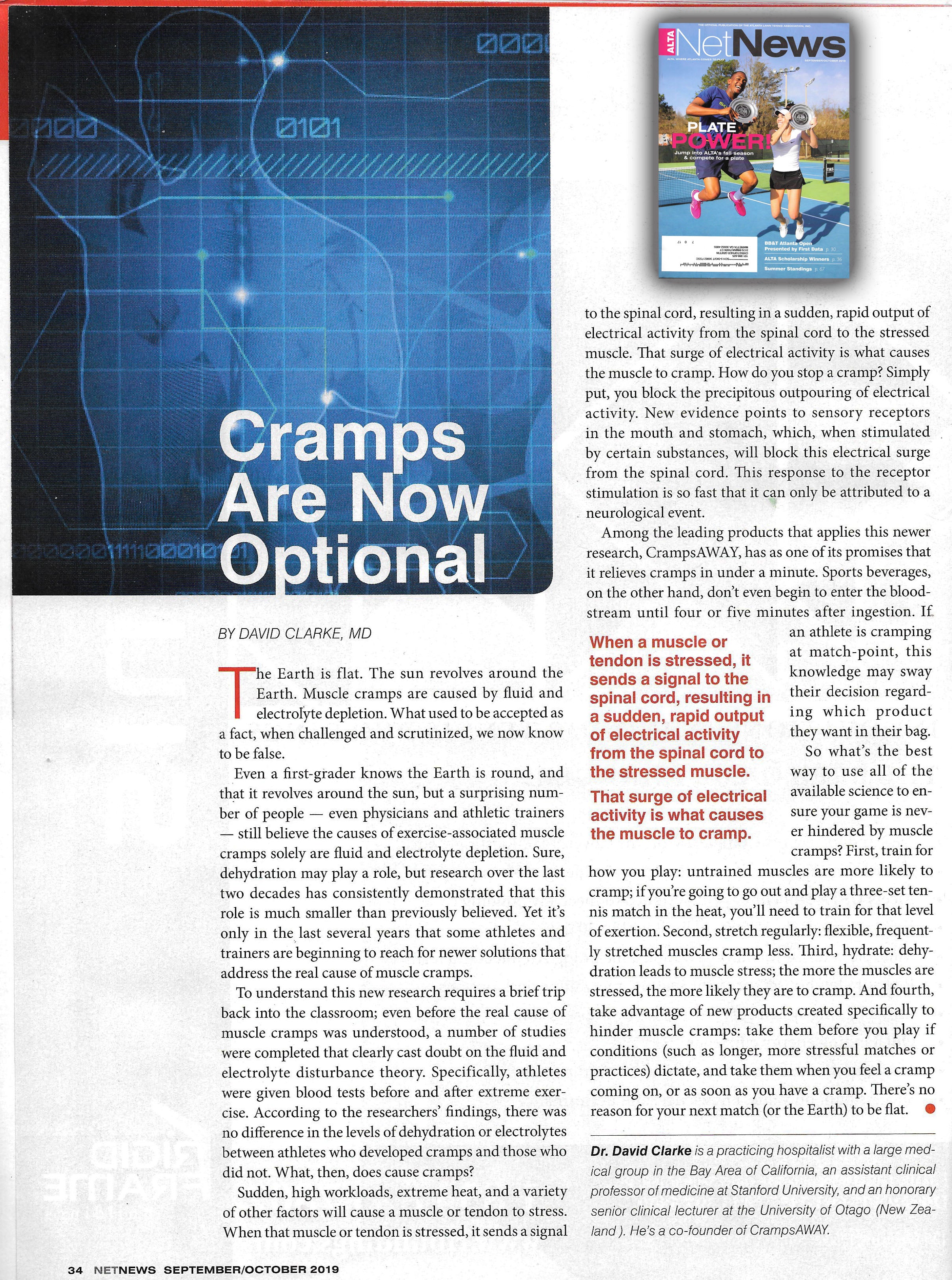By Dr. David Clarke, MD
The earth is flat. The sun revolves around the earth. Muscle cramps are caused by fluid and electrolyte depletion.
What used to be accepted as a fact, when challenged and scrutinized, we now know to be false. Even a first-grader knows the earth is round, and it revolves around the sun. But a surprising number of people – even physicians and athletic trainers – still believe the causes of exercise-associated muscle cramps are fluid and electrolyte depletion. Research over the last two decades has consistently demonstrated that this is not the case. Yet it’s only in the last several years that some athletes and trainers are beginning to reach for newer products that address the real cause of muscle cramps.
To understand this new science requires a very brief trip back into the classroom. Even before the real cause of muscle cramps was understood, a number of studies were done which clearly cast doubt on the fluid and electrolyte disturbance theory. Specifically, athletes were given blood tests before and after extreme exercise. According to the researchers’ findings, there was no difference in the levels of dehydration or electrolytes between athletes who developed cramps and those who did not. What, then, does cause cramps?
Sudden, high workloads, extreme heat, and a variety of other factors will cause a muscle or tendon to stress. When that muscle or tendon is stressed it sends a signal to the spinal cord, resulting in a sudden, rapid output of electrical activity from the spinal cord to the stressed muscle. That surge of electrical activity is what causes the muscle to cramp. How do you stop a cramp? Simply put, you block the sudden outpouring of electrical activity. New evidence points to sensory receptors in the mouth (and stomach), which, when stimulated by certain substances, will block this electrical surge from the spinal cord. This response to the receptor stimulation is so fast that it can only be attributed to a neurological event.
One of the leading products that applies this newer research, CrampsAWAY, has as one of its promises that it relieves cramps under a minute. Sports beverages, on the other hand, don’t even begin to enter the blood-stream until 4-5 minutes after ingestion. At match-point, it’s pretty clear which product most athletes would rather have in their bag.
So…what’s the best way to use all of the available science so your game is never hindered by muscle cramps? First, train for how you play: Untrained muscles are more likely to cramp; if you’re going to go out and play a three-set tennis match in the heat, you’ll need to train for that level of exertion. Second, stretch regularly: Flexible, frequently stretched muscles cramp less. Third, hydrate: Dehydration leads to muscle stress; the more the muscles are stressed, the more likely they are to cramp. And fourth, and most importantly, take advantage of new products, like CrampsAWAY. Take them before you play if conditions (such as longer, more stressful matches or practices) dictate, and take them when you feel a cramp coming on, or as soon as you have a cramp. Given today’s scientific landscape, there’s no reason for your next match (or the earth) to be flat.



Share:
"This is the best solution for muscle cramps I've ever tried."
How Can I Stop Muscle Cramps?